(1088 products available)



























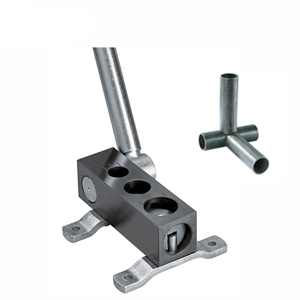






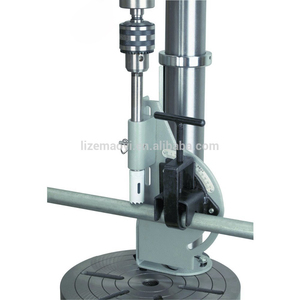








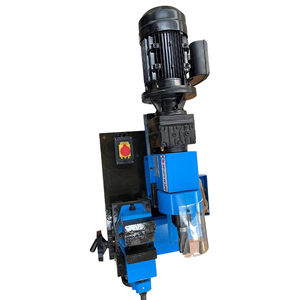























































































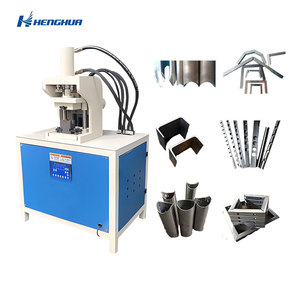
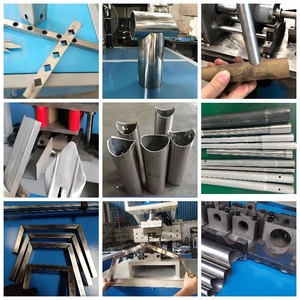


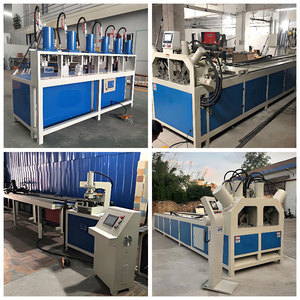



























































A pipe notcher is used to cut notches in pipes, usually for optimal joint fabrication. There are various types of pipe notchers based on the mechanism or design to cut notches in pipes. Some of them are as follows:
Reciprocating Notcher
A reciprocating notcher is a type of pipe notcher that uses a reciprocating saw in the notching process. It is usually guided by a template. The notcher cuts back and forth, removing material from the pipe. The machine is efficient, precise, and easy to handle. Also, the notcher is used for various shapes and sizes of pipes. One major downside of the notcher is that it is prone to operator error. The notcher requires experience and skill to operate effectively.
Hole Saw Pipe Notcher
This notcher uses a hole saw. It is very common in welding shops and works best for cutting notches in circular shapes. To use the hole saw pipe notcher, the pipe has to be clamped into position at a specific angle. Then, the hole saw notches the pipe. The hole saw pipe notcher is affordable and easy to use. It can be used with drill presses and notcher jigs. Also, it is efficient when matching pipes to fillet welds. One downside to this notcher is that it is limited to creating only circular notches.
End Mill Pipe Notcher
This notcher creates various shapes and sizes of notches. It is most commonly used with a notcher fixture that is vertically mounted. In some cases, it is horizontally mounted. To operate it, the end mill is rotated. Then, the pipe is moved into the mill to create the notch. The Notcher is good for creating notches in pipes for tube-to-tube designs. Also, it is used where a fillet weld is required. Furthermore, it is highly accurate and can create notches in hard and soft metals. However, the notchers are usually more expensive than other notchers.
Band Saw Pipe Notcher
The band saw pipe notcher is often mounted vertically for easy use. It cuts through the pipe by using a continuous loop of a blade that is mounted on two parallel wheels. The notcher is highly efficient. It can easily create notches in different sizes and shapes of materials. Also, the saw can be easily operated in various angles. One notable downside of the band saw notcher is the initial cost investment. Some may require complex installation processes depending on the kind of notch being installed.
Manual Pipe Notcher
A manual pipe notcher requires the operator to drill holes. It is mostly used in welding shops. When using this notcher, the operator has to clamp the pipe to the notching table. Then, he drills holes to create the notch pattern. While this notcher is affordable and simple to use, it can be time-consuming.
Max Pipe Size
Refers to the biggest diameter of the pipe that the notcher can work on. For example, a notcher might handle up to 2-inch pipes.
Notch Angle Range
It is the variety of angles the notcher can cut, usually from 0 to 60 degrees. This allows for different types of joints like mitered or saddles.
Cutting Method
Whether it uses a saw, cutter wheel, or any other tool, some notchers use rotary cutters while others use fly cutters, for example.
Motor Power
It is usually indicated in horsepower (HP) or kilowatts (KW). A typical notcher might have a 1.5HP motor, powerful enough to cut through steel pipes.
Weight
Pipe notchers can be lightweight or heavy-duty depending on their size. A portable notcher may weigh around 20 kg, while a solid floor model could be over 100 kg.
Users should follow a maintenance schedule for their pipe notching machines to ensure they always perform optimally and have a long service life. The first thing when it comes to machine maintenance is to create a schedule and stick to it. The maintenance schedule may include daily, weekly, monthly, quarterly, and yearly maintenance routines. Below are some of the apt maintenance routines for a pipe notcher:
Daily Maintenance
Users should inspect the entire machine carefully to detect any issues or loose parts that warrant immediate attention. They should also check the cutting tool to ensure it isn't damaged or worn out. This is also the best time to identify and rectify any alignment issues with the pipe notcher.
Weekly Maintenance
Users should clean the notchers more thoroughly to remove any stubborn residues. They should also lubricate moving parts like the chain, cutters, and crank to reduce friction and prolong their lifespan. The cutting tool's alignment with the notcher's axis should be checked as well to ensure cutting precision and avoid damages.
Any metal or pipe notcher can be used in different industries. There are many applications of notcher machines. Pipe notchers are commonly used in the construction and manufacturing industries.
Many industries use pipe notchers for construction. The construction industry is the highest user of pipe notchers. In construction, notchers cut pipes for:
Before purchasing a pipe notcher for the business, it is essential to consider a few things to ensure that the most suitable product for needs is being purchased.
Notch requirements
Before deciding on a pipe notcher, businesses should consider the types of notches they plan to create and the materials they'll be working with. Different pipe notchers are suited for various pipe shapes and sizes. Ensure the notcher can accommodate the pipes and profiles. Also, consider the required notch shapes and angles (Precision vs. Approximation). If precision is vital in the notched, choose a pipe notcher with a notching template and adjustable guides for precise notch shapes and angles.
Volume of Work
The volume of work is another crucial factor that businesses must consider before choosing a pipe notcher. Since the volume of work refers to the number and frequency of pipes that need to be notched. If only a few pipes need to be notched occasionally, a portable pipe notcher may suffice. However, if many pipes must be notched regularly and quickly, investing in a dedicated machine will be more efficient in the long run.
Ease of Use and Operation
When buying a pipe notcher, it's essential to look for factors like setup time, complexity, and adjustment mechanisms. With these factors in mind, it becomes easier to choose a machine that with notching speed and accuracy will save time and enhance productivity.
Q1: What is the notching of a pipe?
A1: Notching a pipe means cutting or shaping it to create a groove or notch.
Q2: What are pipe notchers used for?
A2: Pipe notchers are used for making accurate and precise notches on pipes and tubes.
Q3: Can a die grinder be used to notch a pipe?
A3: Use a die grinder to notch pipe if no notchers are available. However, it may take longer to achieve the desired results. Using a pipe notcher or coping saw is better for making accurate and precise notches.
Q4: How does a pipe notcher work?
A4: A pipe notcher works by clamping the pipe and then cutting a notch using a notching blade.
Q5: What is the difference between a pipe notcher and a coping saw?
A5: A pipe notcher is a tool specifically designed to cut notches in pipes and tubes. In comparison, a coping saw is a hand-powered tool used to make curved or intricate cuts in wood or plastic.